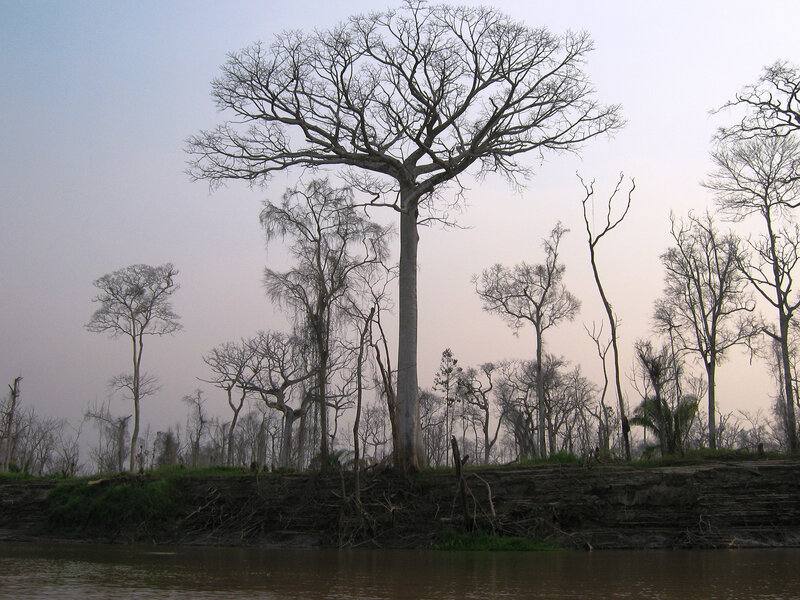Amazon tree diversity faces staggering threats, but there may still be hope
Nearly half the number of trees that grew on Earth when human civilization began still grace this planet, according to a tree census conducted earlier this year. But until now, scientists knew little about how deforestation affected individual species.
So researchers conducted an extensive study of Amazonian tree species to assess the diversity of the world's largest tropical rainforest.
More than 15,000 tree species may live in the dense Amazon rainforest. But some 8,690 of those species could face the threat of extinction, according to the paper published Friday in the journal Science Advances. And because scientists have seen Amazonian trends mirrored in tropical forests across the world, more than 40,000 tropical tree species could face the same risk, the researchers say.
"We aren't saying that the situation in the Amazon has suddenly gotten worse for tree species," study co-author Nigel Pitman said in a press release. "We're just offering a new estimate of how tree species have been affected by historical deforestation, and how they'll be affected by forest loss in the future."
The population dynamics of Amazon tree species has been studied before, but this is the first study to use the International Union for Conservation of Nature’s parameters to define threatened and endangered species.
“We really wanted to communicate our results in a language that is shared throughout Amazonia and the tropics,” Dr. Pitman, a researcher at Duke University’s Center for Tropical Conservation, tells The Christian Science Monitor in a phone interview.
Pitman says this study is different because, “We put our measurements into the most commonly used currency: the IUCN Red List.”
With 36 to 57 percent of Amazonian tree species likely qualifying as globally threatened under the IUCN Red list criteria, the future may seem bleak for the diverse tropical forest. But the researchers say protected reserves may help save the rainforest.
The researchers report a one-to-one relationship between overall forest size and individual species’ population size.
So, “If half of the area is protected, then half of the popular species should be protected,” Hans ter Steege, the study’s lead author, explains to the Monitor in an interview.
Ter Steege says he wrestled with what to title the paper because every option felt too cynical or discouraging.
“A message we would like to convey is the message that there is hope,” ter Steege says. “The message should be: Yes, 11 percent of the Amazon has been deforested and this is a lot, but over 80 percent has not been deforested so this means we have options. We should try and use these options.”
“Half of the Amazon is in reserves,” he adds. “There is no area in the rest of the world where we can say that half of it is protected.”
Pitman agrees with his colleague’s optimism.
“What we found along the way to this estimate is pretty good news,” he says. “We found that reserve coverage is big enough to protect a lot of species.”
But despite significant progress from reserve conservation in the Amazon, Pitman and ter Steege say there is still work to be done. They both stress better management practices for present reserves and future in-depth modeling of individual species.
“Make use of the diversity pattern that we know exists,” says ter Steege. This includes better documentation of individual species, instead of relying on similar models.
“It’s not rocket science,” says Pitman, “but it’s something that we haven’t had to resources to do because there are just so many [species] out there.”






